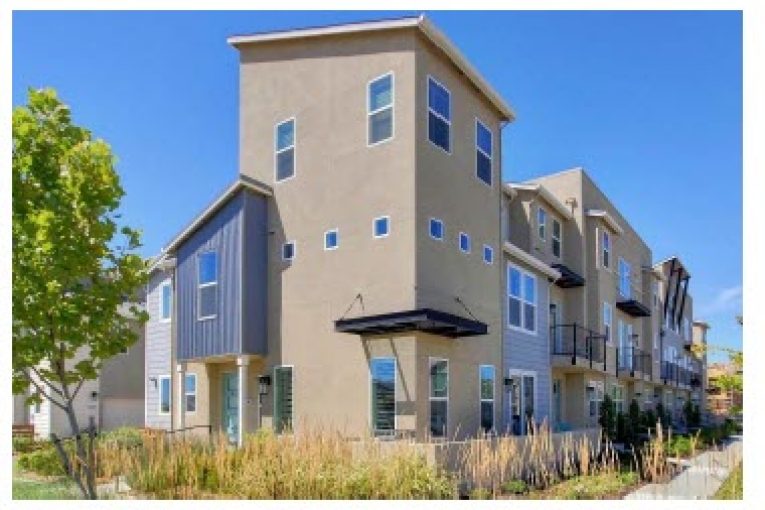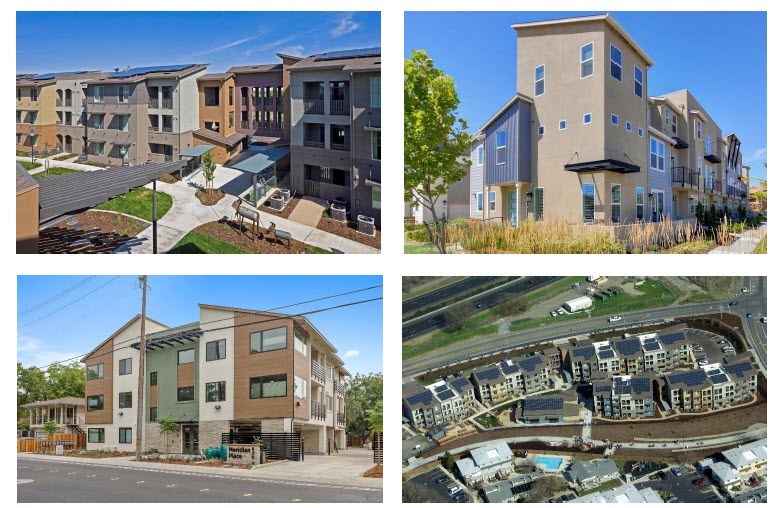
 By David M. Greenwald
By David M. Greenwald
Executive Editor
Davis, CA – Two weeks ago we learned that HCD (Department of Housing and Community Development) did not approve the City of Davis’ Housing Element.
The city has kind of shrugged it off, noting as Ashley Feeney did that “many cities usually receive these types of letters.”
Many of the changes appear to be technical—but not all.
HCD is asking, for example, the city to justify counting 105 units of Affordable housing at Nishi toward their lower-income housing requirement.
“To credit the 105 units toward the RHNA, the City must verify that the Nishi project meets the census definition of a housing unit and is not considered group quarters,” HCD writes.
Further, “while the element outlines the methodology behind converting deed-restricted affordable beds into units, it must also demonstrate that renters,  particularly nonindependent student renters, qualify for the deed-restricted leases.”
particularly nonindependent student renters, qualify for the deed-restricted leases.”
Even more ominously, HCD points out, “The revised element identifies a shortfall of adequate sites to accommodate the regional housing need for lower-income households. It also identifies candidate sites that will be rezoned within the first three years of the planning period.”
However, “sites include a capacity assumption of 100 percent build out. The element must support the capacity methodology assumed for these sites…”
The city has acknowledged, “The City does not currently contain enough vacant land appropriately zoned for the development of the housing necessary to meet the city’s estimated housing needs for the period 2021 and 2029.”
HCD expresses concern about the impact of Measure J and other growth control measures on the city’s ability to deliver on its housing needs.
“As recognized in the housing element, Measure J poses a constraint to the development of housing by requiring voter approval of any land use designation change from agricultural, open space, or urban reserve land use to an urban use designation,” HCD writes. “Since the ordinance was enacted in March of 2000, four of the six proposed rezones have failed.
“As the element has identified the need for rezoning to accommodate a shortfall of sites to accommodate the housing need, the element should clarify if any of the candidate sites to rezone would be subject to this measure and provide analysis on the constraints that this measure might impose on the development of these sites.”
All of this is to say it is not clear that the city can justify that they have sufficient zoned land to accommodate their housing—particularly low-income housing—needs.
“As a reminder, the City’s 6th cycle housing element was due May 15, 2021. As of today, the City has not completed the housing element process for the 6th cycle,” the letter from HCD warned. “The City’s 5th cycle housing element no longer satisfies statutory requirements. HCD encourages the City to make revisions to the element as described herein, adopt, and submit to HCD to regain housing element compliance.”
What happens if they don’t?
As UC Davis Law Professor Chris Elmendorf points out, “While Davis is out of compliance, it can’t use its zoning code or general plan to reject a 20% low-income or 100%-moderate project.”
But he adds, “But any developer who’d try such a project faces a long, uncertain slog through the courts.”
Kevin Burke’s blog post also drew attention, “You Can Build a Skyscraper Anywhere in Davis Right Now.”
Burke points out: “So it’s legal right now to buy any lot in Davis and submit a proposal to build a skyscraper on it.”
He does make an interesting point: “You would need to meet Davis’s other rules—for example, if Davis has rules about parking or fire egress or whatever, you would have to abide by those. But any rules Davis had about density on a site would not apply. Crucially, Davis can’t change the rules after your application. As long as you submit it now, while their housing element is noncompliant, they have to be bound by the rules on the books now.”
He adds, “The problem is that big buildings are expensive and the law has never been tested. If you built it you’d be looking at a legal fight for about 4-5 years. I think you would have a good chance of winning—the California courts have in recent years swatted down local NIMBYism at Vallco Mall, in San Mateo and in Los Altos. But you would still have to go through the process.”
He adds, “Why hasn’t someone tested it? Because most developers are playing a repeated game with cities, housing applications have historically relied on a lot of goodwill to get through the planning process, and they haven’t wanted to upset the apple cart for one big and uncertain return. So there is room for a brash outsider who doesn’t care what people or planning staff in Davis think about them.”
You would probably need an out-of-town developer with deep pockets (for a lot of reasons) to wade into the risk involved in even proposing such a beast. That seems unlikely.
The bigger problem is the problem that we have identified from the start—where is Davis going to put the housing that it needs to build? There is no real good answer there and so far it has been the one question the city has seemingly dodged.


I dunno…if you combined Davis’ RHNA non-compliance status with SB 35 (multi-family affordable development that goes through the ministerial process/fast track around NIMBY’s and local government); you might have something.
I had a fun discussion with a developer buddy of mine about submitting plans for a high rise in Davis just for fun. I could be wrong but I don’t think anything he builds (special construction materials and process) goes over 5 stories.
And yet, the city was warned about that (along with the other megadorms), in advance. And on this very blog, as well!
If I’m not mistaken, this issue was also related to the lawsuit against Nishi regarding the ability (or lack thereof) for non-students to live there. Of course, the Vanguard vehemently-opposed that lawsuit, while now raising concerns about the very same issue.
It does not appear that the issue addressed by HCD was raised in the lawsuit.
From the city’s press release:
The judge ruled against plaintiffs in the lawsuit.
And yet, HCD is not willing to provide credit as affordable housing, which seems to be the same issue as that raised in the lawsuit. If it meets the definition of “affordable housing”, why isn’t HCD “counting” it as such?
Nor is it discussed whether or not the Nishi units (or any other megadorm units) “count” toward (and fulfill) any other required RHNA category in regard to this round of requirements for Davis.
Here is what HCD actually said:
I assume this means that NONE of the units for any of the recent megadorm development approvals count-toward (or fulfill) ANY of the city’s RHNA requirements – in any category. The very thing that some warned the city about PRIOR TO approvals, which was apparently totally ignored by the council.
Again, the very issue that the lawsuit challenged (which was opposed by the Vanguard).
Is it possible to blow both Alan Miller and Ron Glick over with a single feather?
That wording is from David, not HCD.
If anything, HCD is “concerned” that the city is claiming that the megadorms should count, despite being warned in advance that there would likely be a problem regarding that.
The state is not in the business of promoting sprawl, in regard to RHNA requirements. If it were, vast metropolitan areas along the coast would have trouble meeting “sprawl” requirements. Something that (no matter how many times it’s pointed out on here) is consistently ignored by the advocates for sprawl.
If HCD actually starts making cities “sprawl”, the problem is with HCD – not the cities.
There is an effort to overturn the recent housing laws enacted by the state.
They are related goals but not bound to each other. What I mean is that yes the state wants to promote infill development AND it wants to promote more housing and affordable housing. Ideally the intention behind these efforts is for more housing and more affordable housing to be infill housing. HOWEVER, the goal of more housing and more affordable housing is NOT considered dependent on it being infill housing. By that I think it’s clear that the HCD considers what is likely to be developed as infill property in it’s allotment of housing and considers peripheral development as a necessary solution in some circumstances.
There is nothing in HCD’s statement which indicates that it considers peripheral development as a “necessary solution”.
If anything, HCD’s statement indicates that unapproved peripheral proposals shouldn’t be counted-on to meet requirements. As such, it would likely reject any inclusion of an unapproved peripheral proposal (with the possible exception of an Affordable proposal or designation thereof which is exempt from Measure J requirements – as described and allowed under Measure J.)
My fifth comment, today.
” By that I think it’s clear that the HCD considers what is likely to be developed as infill property in it’s allotment of housing and considers peripheral development as a necessary solution in some circumstances.”
Complicated in Davis by a lack of infill opportunities on the one hand and Measure J on the other.
We have tons of space not related to Measure J. No further killing of owls is necessary. Most are well-within the City’s periphery, quite a few close to UC Davis or Downtown/Davis Depot, most or all on existing bus lines, most not within the noisy proximity of I-80, some on new or near-future improved cycling infrastructure, and immediately proximate or even on top of electrical, water and sewer-works: Large- and medium-sized parking lots, mostly at shopping centers and a few churches.
If desired, in some cases the parking can be preserved. This is certainly not a match for luxury homes or family houses, private garages and whatnot. But there can be condos or apartments of large and small size with all sorts of features in addition to the extreme proximity to services… and in some cases, services.
Name 3.
Here are five of the largest sites, shopping centers:
https://goo.gl/maps/gN8BVVnVJ1tPs6cd8
https://goo.gl/maps/dvMFhN4dw6NKRefx6
https://goo.gl/maps/bvMLMmapjbnhQvz89
https://goo.gl/maps/PpRxiouhtB582qP5A
https://goo.gl/maps/4BvF49eSbEDxiyfe8
For reference, this is the recently-opened Identity Davis (Davis Live) https://goo.gl/maps/di2VwpYGn9otMVpv8
There are some smaller sites, and also more greenfield sites with status I’m not sure, and larger sites like Davis Creek which are low density and might make sense to re-develop with at least the same number of lower income homes.
So let’s say at least six sites which have a footprint similar to or smaller than Identity Davis, which houses over 400 people.
If we’re really smart and want to house lots of people close to the University and/or Downtown we’ll build housing on the north side and something else on the south side of PG&E, and stop making excuses about why we can’t do it, and on top of 113 roughly between Hutchison and Covell – and win awards for it – and not functionally but separately from the formal bits… force UC Davis to build nothing lower density than Identity Davis (with the same or less amount of parking. There’s still a huge amount of land used for parking on campus, so building out further west as they are doing is foolish).
Then we also dig a trench for I-8o south of the City and Putah Creek, put in the highway, cover it with a tunnel emergency somewhere east of Mace, join it with 50 in West Sac with a continuous path to 80 east. No egress from Mace. Convert 80 in the city into a boulevard of some sort, add the passenger only rail system, build nice mixed use all over here, and I should be getting a fat check for sketching out this chapter of the new General Plan.